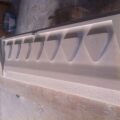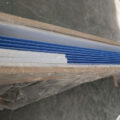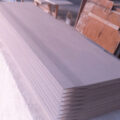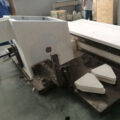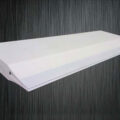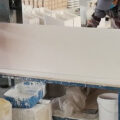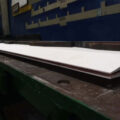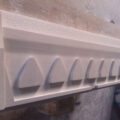Foundry Tip Cavity is used for the aluminum strip casting process. Molten aluminum is fed from the elongated casting tip into the nip between two counter-rotating water-cooled rolls. The molten aluminum is cooled when it comes into contact with the rolls and cools as it passes between the rolls, thereby forming a wide cast metal strip of uniform thickness. As long as the liquid metal is supplied to the casting machine, the casting process can proceed continuously.

Foundry Tip Cavity is usually made of a low-density ceramic material that can withstand the wear and thermal shock associated with contact with liquid aluminum, such as a ceramic fiber board formed into the necessary shape. Because of the low density of these materials, their thermal conductivity is very low (usually less than 0.18 W/mK), and can provide a certain degree of thermal insulation for the liquid aluminum in the Caster Tip.
However, after a period of production, they may be subject to chemical attack and wear. This can lead to the formation of various impurities within the tip structure, and eventually, lead to a premature stop of the casting movement.
The aluminum casting rolling mill includes two rollers, an upper roller, and a lower roller. The non-stick aluminum casting nozzle is set in the gap between the upper and lower rollers. The Feed Caster Nozzle includes two casting nozzle pieces, which are the upper and lower rollers. The upper nozzle piece adjacent to the roller and the lower nozzle piece adjacent to the lower roller. As the production time continues, some carbon deposits and fine particles may accumulate on the upper and lower nozzle pieces. These slags will eventually form dark lines and scratches on the surface of the aluminum plate, which will seriously affect the surface quality of the aluminum plate. These defects are difficult to eliminate by conventional means. In order to overcome these shortcomings, the traditional method is to re-rise the slab, that is, remove the slag after the production is stopped and re-produce. However, the re-raising will greatly affect the production efficiency and significantly increase the production cost.

